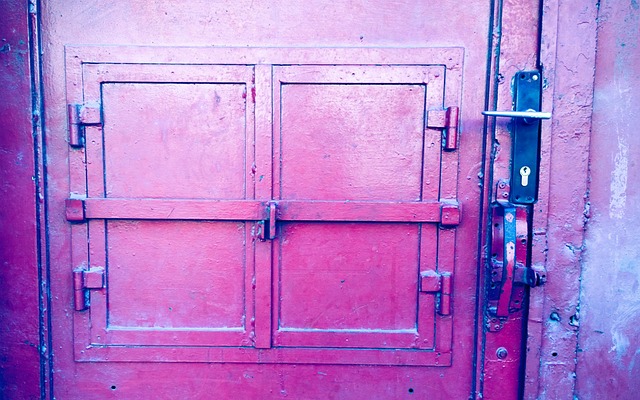Elderly home safety demands specialized solutions like medical alert systems with security features, addressing physical limitations and independence challenges. These systems offer straightforward activation, loud alerts, and easy-to-use call buttons, notifying emergency services via GPS tracking, voice recognition, or fall detection. Integrating security features enhances protection beyond medical crises, allowing seniors to maintain independence while providing peace of mind for caregivers through real-time alerts.
Elderly residents have distinct needs when it comes to home safety. Understanding these unique challenges is crucial in designing effective alarm systems. This article explores tailored solutions, focusing on medical alert systems and integrated security features for enhanced well-being. By combining these technologies, we can provide seniors with a lifeline that promotes independence while ensuring prompt assistance during emergencies. Discover how user-friendly design plays a pivotal role in the success of simple yet powerful alarm systems specifically crafted for the elderly population, incorporating essential medical alert systems with security functionalities.
- Understanding the Unique Needs of Elderly Residents
- Medical Alert Systems: A Lifeline for Seniors
- Integrating Security Features for Enhanced Safety
- Designing User-Friendly Alarm Systems for Elderly Users
Understanding the Unique Needs of Elderly Residents

Elderly residents have distinct needs and considerations when it comes to home safety and security, especially as their physical capabilities and independence may change over time. Traditional alarm systems often overlook these unique challenges, making them less effective for this demographic. For instance, complex setup processes or small, easily missed alarms might not suit an elderly person’s lifestyle or visual/auditory abilities.
This is where medical alert systems with security features specifically tailored to the elderly can make a significant difference. These systems are designed to provide quick and reliable assistance during emergencies. They often include simple, loud alerts, easy-to-use call buttons, and even automatic fall detection technology. Such features ensure that help arrives promptly if an elderly resident experiences a fall or requires immediate medical attention, enhancing their sense of security and independence in the comfort of their homes.
Medical Alert Systems: A Lifeline for Seniors

Medical alert systems have become an indispensable lifeline for elderly residents, offering them and their families a sense of security and peace of mind. With advanced technology, these systems enable seniors to quickly access help in emergency situations, especially when they are alone or unable to reach a phone. The integration of security features further enhances their effectiveness, allowing users to call for assistance not just during medical emergencies but also during potential security threats.
For elderly individuals with mobility issues or cognitive challenges, a medical alert system can provide a safety net. Wearable devices or buttons placed around the home allow seniors to discreetly signal for help with just the press of a button. This immediate response time can be crucial in mitigating health risks and ensuring timely medical attention. Moreover, some advanced systems offer GPS tracking, voice recognition, and automated fall detection, making them comprehensive solutions tailored to meet the unique needs of an aging population.
Integrating Security Features for Enhanced Safety

Elderly residents often require specialized solutions that integrate safety and security features for enhanced well-being, especially in their homes. Medical alert systems with security components offer a comprehensive approach to monitoring and assistance. These systems not only facilitate quick response in emergencies but also provide a sense of security by incorporating features like automated fall detection, door and window sensors, and motion alarms.
By integrating these security measures, elderly individuals can live independently while ensuring that help is readily available when needed. The advanced technology behind these systems enables continuous monitoring, allowing caregivers or family members to receive alerts in real-time if any suspicious activities occur or if an accident happens, such as a fall. This proactive approach to safety enhances peace of mind for both the elderly and their loved ones.
Designing User-Friendly Alarm Systems for Elderly Users

Designing user-friendly alarm systems for elderly users is a critical aspect in enhancing their safety and independence. These individuals often require simple, intuitive interfaces that allow them to quickly activate assistance when needed. Incorporating large buttons with clear labels and voice activation options can significantly improve usability. Additionally, integrating medical alert systems with security features ensures that help can be dispatched promptly in case of emergencies, such as falls or sudden health issues.
Elderly users may also benefit from customizable alarms that cater to their specific routines and preferences. This could include setting different alerts for morning medication reminders, meal times, or even bedtimes. By offering these customization options, the alarm system becomes more than just a safety net; it becomes an integral part of their daily lives, promoting peace of mind and self-reliance.
Elderly residents have distinct needs when it comes to safety and security, which is why simple yet effective alarm systems tailored for them are essential. Medical alert systems with integrated security features offer a lifeline, ensuring prompt assistance in emergencies. By prioritizing user-friendly designs, these systems can enhance the independence and peace of mind of seniors, allowing them to live safely and comfortably in their own homes.
